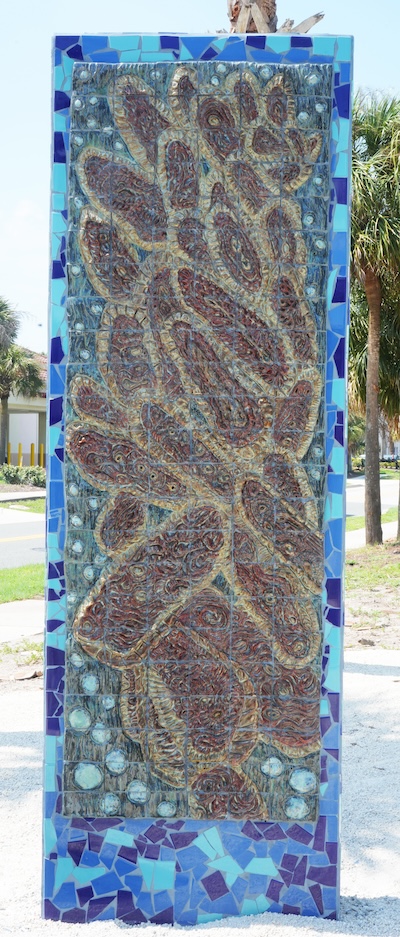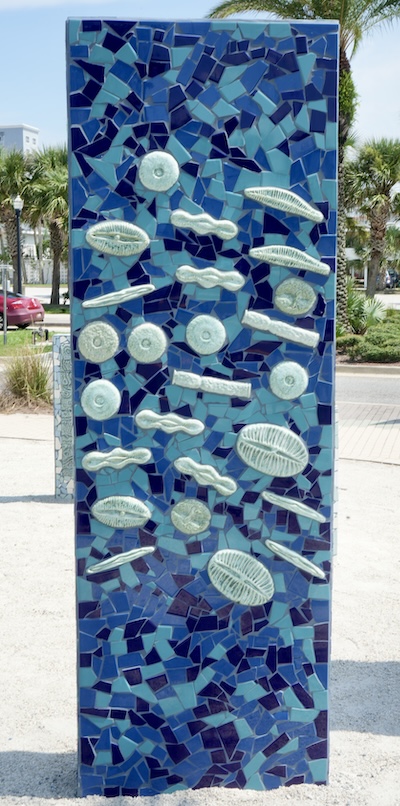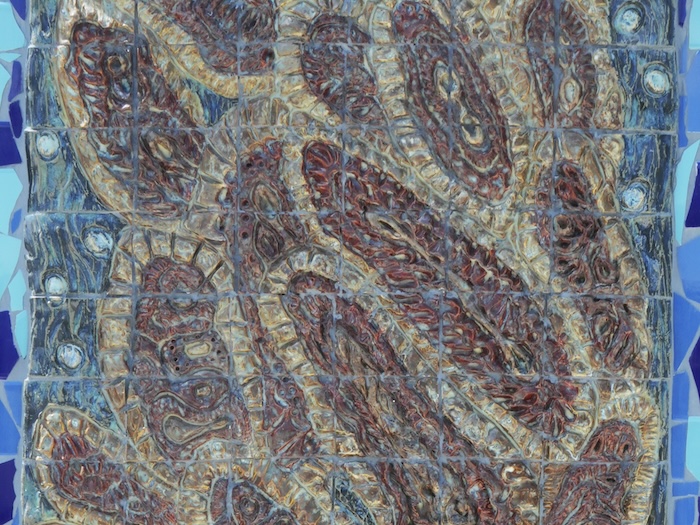Home » 2024 » Water Columns » Blake Ridge | Chemosynthetic Mussels


Xavier Cortada, “Blake Ridge | Chemosynthetic Mussels,” 96″ x 32″ x 8″, hand-carved, hand-glazed ceramic tile on concrete, 2024
(Water Columns series in Jacksonville Beach, FL)
Chemosynthetic Mussels
Part of the seven-piece “Water Columns” installation, this ceramic tile work represents the Blake Ridge off Jacksonville Beach. It depicts chemosynthetic mussels, which thrive in deep-sea methane seeps, highlighting the significance of these unique ecosystems in marine biodiversity.


Story
Diving deeper into the ocean still, you’ll find communities of mussels near cold methane seeps, where methane bubbles up through cracks in the seafloor. These mussels feed on bacteria that use a process called chemosynthesis to turn chemicals, rather than sunlight, into energy to survive. This process was only discovered in the late ‘70s.
Did you know that mussels are known as ecosystem engineers because they create habitat for other marine species? Or that marine mussels are more closely related to scallops and oysters than freshwater mussels?
Even in the deepest, darkest parts of the ocean, life is thriving! This area is so important for ecological functions that the seeps in the Blake Ridge Diapir have been designated as Habitat Areas of Particular Concern by fisheries managers. Even the areas and species of the ocean we cannot see are an important part of our broader ecosystems.
References
- DeLeo, D.M., Morrison, C.L., Sei, M. et al. Genetic diversity and connectivity of chemosynthetic cold seep mussels from the U.S. Atlantic margin. BMC Ecol Evo 22, 76 (2022). https://doi.org/10.1186/s12862-022-02027-4
- Freshwater vs. Marine Mussels. Conserve Wildlife Foundation of New Jersey. (2012, August 28). https://www.conservewildlifenj.org/blog/2012/08/27/freshwater-vs-marine-mussels/#:~:text=Within%20the%20phylum%20Mollusca%20and,they%20are%20to%20freshwater%20mussels.
- Suatoni, L. (2024, April 15). The blake plateau: A Southern treasure. NRDC. https://www.nrdc.org/resources/blake-plateau-southern-treasure#:~:text=The%20Blake%20Plateau%20is%20an,%2C%20sea%20turtles%2C%20and%20swordfish.